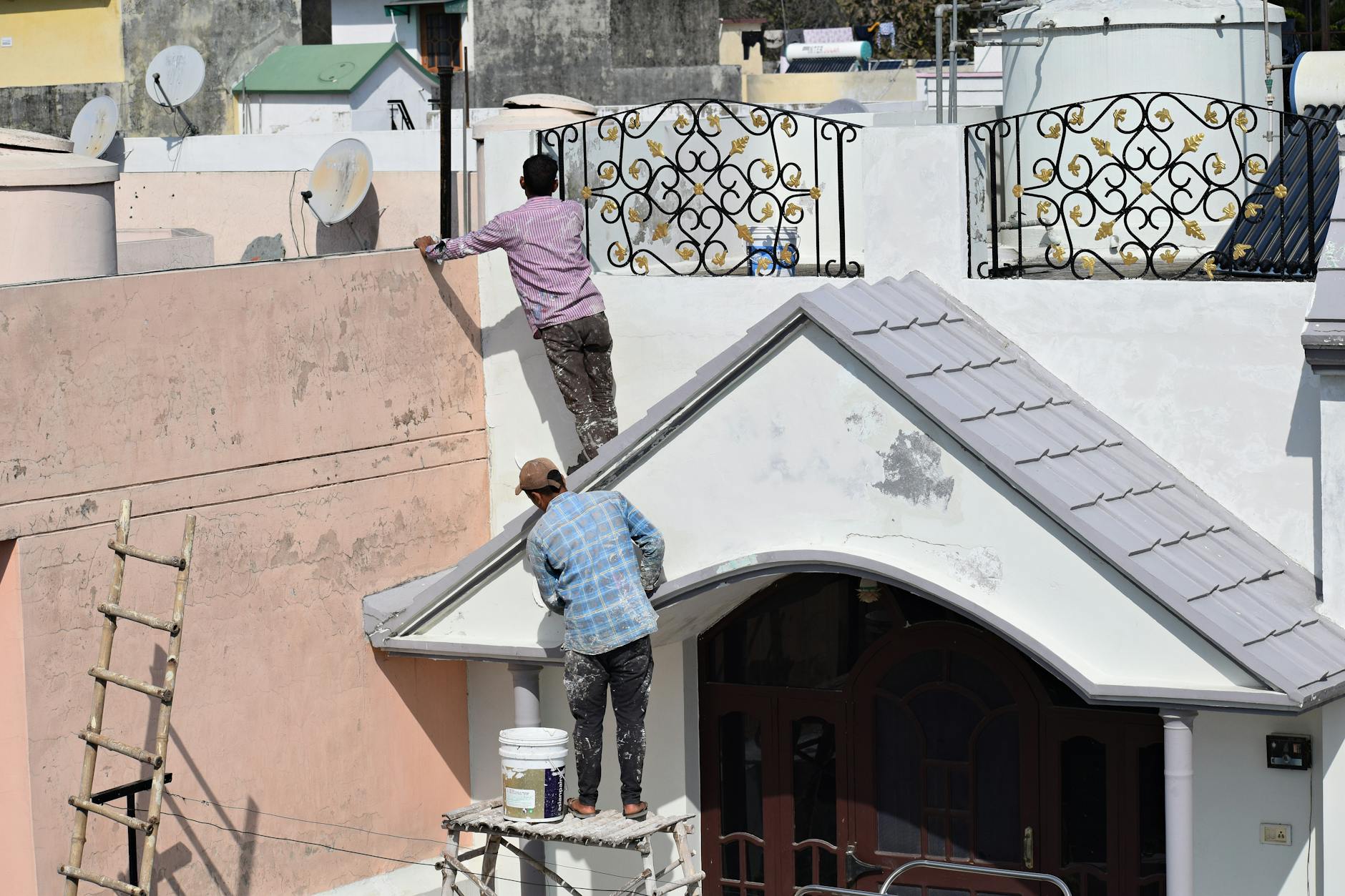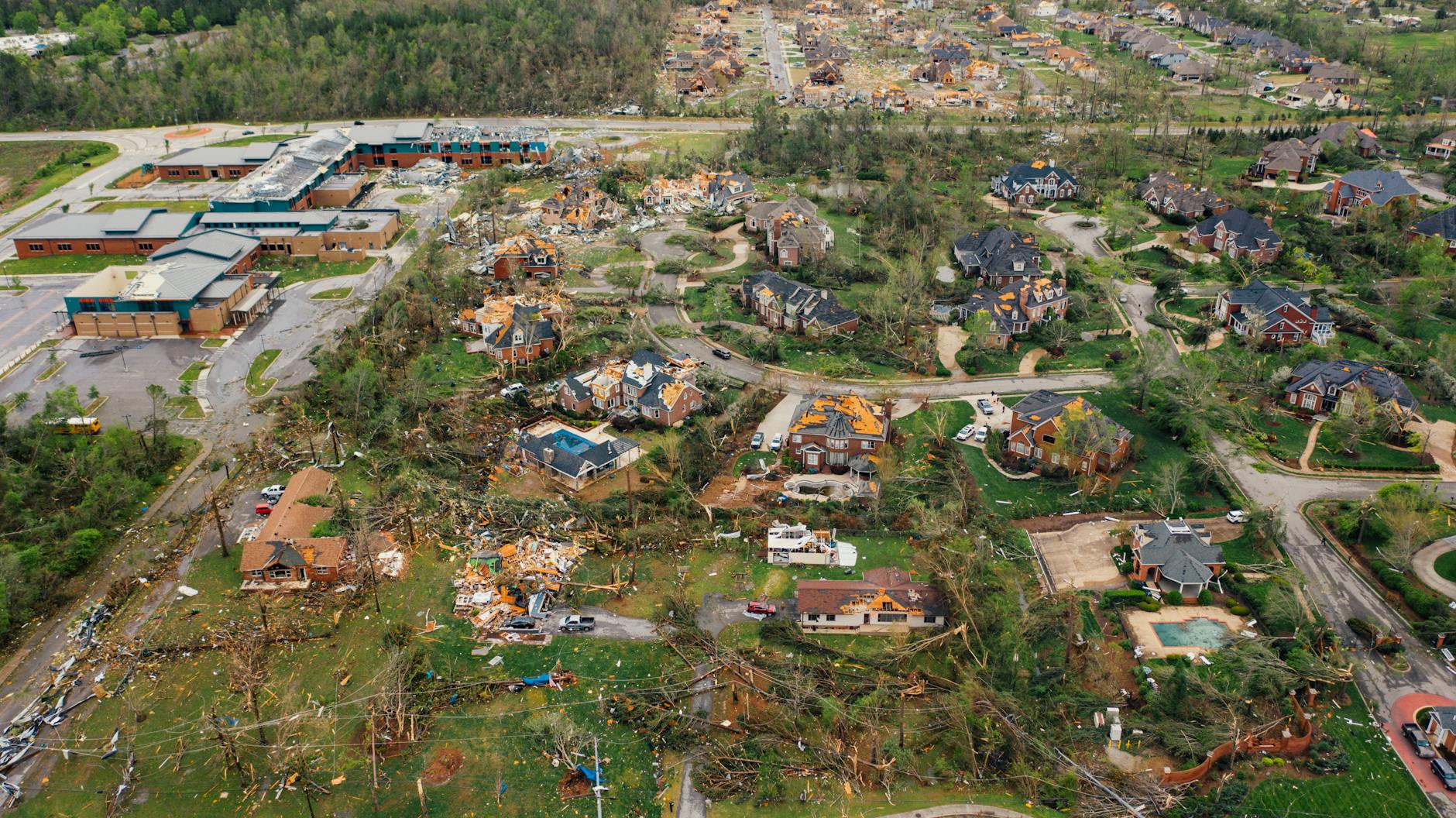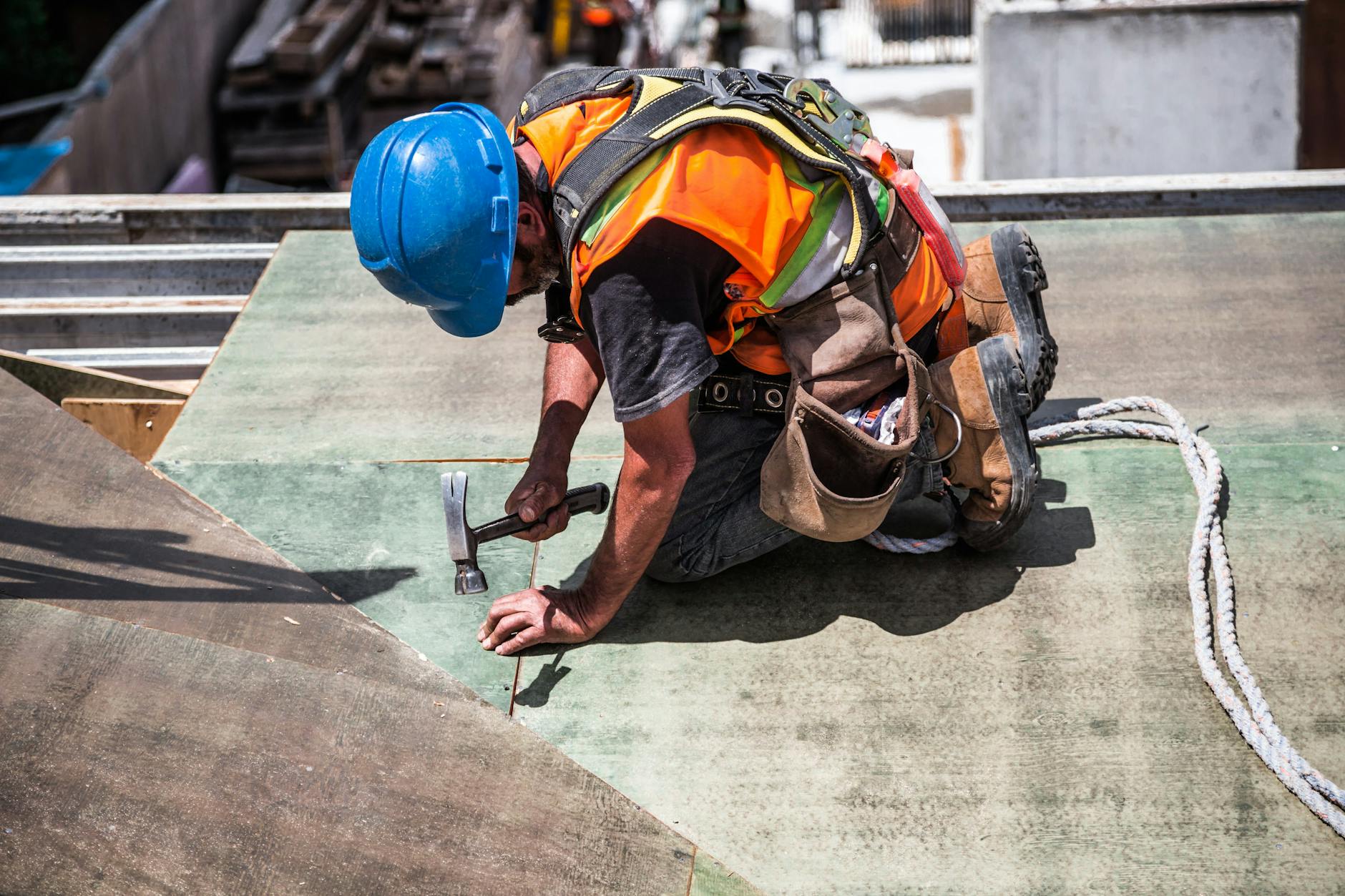Your roof is your home’s first line of defense, but how often do you think about its condition? Small issues like cracked shingles or minor leaks can quickly escalate into costly repairs if ignored. Spotting signs of roof damage early can save you money, protect your home’s structure, and keep your family safe. This guide will help you recognize warning signs of roof damage before they become major problems, so you’ll know exactly when it’s time to call in the experts.
Your roof Damage quietly works day in and day out to protect your home from the elements. But like any part of your house, it requires care to stay in good condition. Ignoring minor repairs might seem harmless, but it can snowball into costly issues over time. Proactive roof maintenance ensures your home stays safe and your investment remains solid. Let’s explore why this matters in detail.
Keeping up with roof damage maintenance is like tuning up your car – it prevents wear and tear from spiraling out of control. By addressing small problems early, such as fixing loose shingles or sealing minor cracks, you can extend the life of your roof by years, even decades. Timely repairs save you from the dread of a premature roof Damage replacement, which can set you back thousands of dollars.
Think of it this way: a small leak that’s caught early is a quick fix. Let it go, and that leak can turn into irreversible water damage. Routine inspections help you stay ahead of these seemingly minor problems, keeping your roof functional while saving you significant money in the long run.
Roof Damage isn’t just an eyesore – it’s a silent threat to your home’s integrity. Water seeping through cracks or missing shingles can wreak havoc, leading to mold growth, rot, and weakened structural supports. Before you know it, what started as a tiny issue becomes a full-blown nightmare.
Mold, for instance, can not only ruin walls and ceilings but also pose serious health risks to your family. Weakening supports can compromise your home’s safety, creating problems that go far beyond a roofing issue. Repairing damage as soon as it’s detected prevents these instances, ensuring your home remains solid and safe.

Photo by Rajesh S Balouria
A well-maintained roof is an essential factor in preserving your home’s value. Picture potential buyers viewing your home—what do you think their takeaway will be if they spot broken shingles or sagging gutters? These issues scream neglect and can significantly decrease your home’s market value.
On the flip side, a roof in excellent condition shows attention to detail and gives buyers peace of mind that the property is move-in ready. Regular roof maintenance not only prevents a value drop but also ensures your home remains a secure and desirable investment. After all, first impressions matter, especially in real estate.
Skipping roof maintenance might save a little time in the short term, but it almost always costs more in the end. Addressing small red flags ensures longevity, protects your home’s structure, and keeps its market value intact. The payoff? Peace of mind and a roof that continues to serve its purpose – without breaking the bank. Keep an eye on it; your home depends on it.
Ignoring roof damage can snowball into significant issues, affecting your home’s safety, energy efficiency, and curb appeal. Knowing how to identify problem areas early can save you from costly replacements. Below are some common signs that indicate your roof may need repairs. Keep in mind, these signs can sometimes be subtle, so paying attention to both the outside and inside of your home is key.
Shingles are your roof’s first line of defense. When they’re cracked, curled, or missing altogether, they leave your home vulnerable to water damage and leaks. These issues often develop due to age, weather conditions, or poor installation.
Damaged shingles allow moisture to seep underneath, potentially leading to mold growth or rot in the roof deck. If you notice discoloration or uneven spots, this could be a sign that shingles are not functioning as they should. Missing shingles, often visible after storms, expose bare spots on your roof, creating weak points that can lead to extensive damage down the line.
Have you ever noticed small, gravel-like particles in your gutters or at the base of your downspouts? These are granules from asphalt shingles. While some granule shedding is normal, excessive loss is a red flag. Granules protect the shingles from UV damage and weathering. Without them, shingles wear out faster, making the roof less resistant to harsh weather.
If you see bald patches on your shingles or find a significant amount of granules collected, it’s time for an inspection. Left unchecked, this problem could compromise the roof’s ability to repel rain and shield your home from the elements.
 Photo by Kelly
Photo by Kelly
Leaks are one of the most obvious and immediate signs your roof needs attention. But the tricky part? The damage isn’t always right above the visible leak. Watch for stains on ceilings, soft or damp spots near walls, or peeling paint inside your home. You might even notice a musty smell in your attic or crawl spaces.
Water intrusion can mean compromised flashing, damaged shingles, or other structural issues. Over time, unchecked leaks can weaken the wood and cause widespread water damage, making repairs or replacements far more expensive.
A sagging roof isn’t just an aesthetic issue—it’s a safety hazard. This can be caused by multiple factors, including structural damage from water absorption, excessive snow buildup, or even incorrect framing during construction.
Inspect the roofline from the ground. If it appears wavy or dipped in certain areas, it indicates weakened decking or support beams. This problem requires immediate professional attention to prevent more extensive (and costly) structural repairs.
Flashing is the metal material around chimneys, vents, and skylights, acting as a watertight seal. When it becomes rusty, cracked, or detached, it creates an entry point for water.
Examine the areas where the roof meets walls, fixtures, or any protrusions. Damaged flashing often leads to leaks, as it no longer effectively channels water away. Repairing these areas promptly ensures your roof remains weatherproof and functional, especially during heavy rain or snow.
Spotting these issues early can save you from major headaches down the road. A simple inspection from time to time—especially after significant weather events—can catch these problems before they escalate. If any of these signs sound familiar, don’t wait too long to take action.
Your roof works tirelessly, shielding your home from everything nature throws at it. However, environmental factors can chip away at its integrity over time, leaving you vulnerable to costly repairs. From extreme weather conditions to unseen moisture buildup, being aware of these threats can help you take preventive action when it matters most.
 Photo by Serhii Bondarchuk
Photo by Serhii Bondarchuk
Harsh weather leaves no room for compromise when it comes to roof durability. Storms bring high winds capable of bending or tearing shingles, while heavy rain can exploit even the smallest weaknesses in your roof’s structure. Hail, on the other hand, is like throwing tiny projectiles at your roof. The damage may not always be immediately noticeable, but repeated exposure to hailstorms can dent or puncture roofing materials, leading to leaks.
Snow also burdens roofs with its weight, especially when it accumulates over time. Beyond the stress, the freeze-thaw cycle can wreak havoc on your roof. When snow melts during the day and refreezes at night, it can create ice dams along the edges. These ice dams block proper drainage, causing water to back up under the shingles and seep into your home.
Key takeaway? Severe weather events compromise your roof’s ability to protect your home. Regular inspections, especially after storms, are crucial for catching damage early before it spirals out of control.
Drastic changes in temperature put stress on roofing materials through expansion and contraction. This is especially problematic during seasonal shifts when daytime heat gives way to freezing nights. Over time, these shifts can cause shingles to crack, curl, or even separate from the roof surface.
Then there’s the sun – relentless and unforgiving. UV exposure causes materials like asphalt shingles to weaken, fade, and become brittle. Think of it as sunburn for your roof, and just like your skin, prolonged exposure accelerates aging. Homes in regions with consistent high temperatures are especially prone to this type of roof wear.
You might not be able to control the climate, but you can adapt. Using UV-resistant coatings and ensuring proper ventilation can help minimize these effects, extending the lifespan of your roof.
Moisture is one of the silent attackers of roof health. High humidity, when paired with inadequate attic ventilation, creates the perfect storm for mold, mildew, and rot. This often starts small – moisture collects where the roof meets poorly ventilated spaces, like an attic. If left unchecked, it weakens the wooden support structure, leading to sagging or compromised decking.
What about standing water? Flat or low-sloped roofs are especially vulnerable, as pooling water from rain or melted snow can seep into cracks. Over time, this continuous exposure not only damages the roof’s core but also invites pests and algae to take root.
Proper ventilation plays a significant role in combating moisture. When heat and humidity are allowed to escape through vents, your roof stays dry and intact. Without it, the warm air gets trapped, causing condensation and accelerating deterioration. Addressing ventilation problems today can save you thousands in potential repairs tomorrow.
Understanding how these environmental factors impact your roof equips you with the knowledge to act before it’s too late.
Delaying roof repairs might seem harmless in the short term, but the consequences can affect much more than your wallet. Minor roof issues have a way of snowballing into costly, dangerous, and even unlivable conditions for your home. Here’s what you should know about the risks associated with putting off repairs.
Small roof problems, like minor leaks or a few missing shingles, may not seem urgent. But over time, these small issues worsen. What could have been a simple repair might turn into a major expense. For example:
Think of it like a crack in your car windshield. If you don’t repair the crack early, it spreads and eventually requires a full replacement. The same principle applies to your roof. Addressing minor issues early can save you thousands in avoidable expenses.

Photo by Plato Terentev
A leaky roof doesn’t just damage your home—it can harm your health. When water infiltrates your home, the damp areas become a breeding ground for mold and mildew. These fungi might seem harmless as they start, but they grow rapidly in moist, dark spaces, such as attics or walls.
Mold spores can spread into the air, causing respiratory problems, allergies, and aggravating conditions like asthma. Prolonged exposure can lead to more severe health issues, posing a significant threat to families with children, elderly members, or individuals with weakened immune systems.
In addition to health risks, mold restoration processes are expensive, involving deep cleaning, professional remediation teams, and even reconstruction efforts. Taking action on roof damage issues promptly can save both your health and your budget.
Your roof plays a major role in keeping your home energy-efficient. When it’s well-maintained, it acts as an effective insulating barrier, keeping warm air inside during winter and cool air in during summer. But when roofing issues arise, such as holes, cracks, or improper seals, your home’s efficiency takes a hit.
Here’s what can happen when you delay roof repairs:
If you’ve noticed higher energy bills, your roof could be a contributing factor. Fixing leaks or replacing damaged shingles won’t just repair your roof—it’ll also help reduce heating and cooling costs.
In rare but extreme cases, ignoring roof repairs can lead to catastrophic consequences, including a full or partial roof collapse. This typically happens when a roof sustains so much damage from trapped moisture, sagging materials, or structural faults that it no longer supports its own weight. Add heavy snow, ice buildup, or even a severe storm to the mix, and the results could be disastrous.
Signs like a sagging roofline, uneven sections, or extensive leaks aren’t merely cosmetic—they signal severe structural stress. Beyond the repair costs, a roof collapse could mean damage to other parts of your home, destroyed belongings, and, most alarmingly, risk to anyone inside the house.
In extreme cases, entire families have been displaced following neglected roof issues. This is why regular inspections and timely repairs are crucial for safety and peace of mind. The stakes are simply too high to ignore.
By staying proactive and acting on the early signs of roof damage, you can avoid these risks and protect your home’s integrity for years to come.
Determining when to seek professional roof repair services is critical to safeguarding your home. While some issues might seem manageable on your own, a professional roofer brings expertise, proper equipment, and long-term solutions. Here’s a breakdown to help decide when to call in the experts, and how to choose the right one.

Photo by Burst
Routine inspections help catch minor issues before they escalate into costly repairs. Ideally, you should schedule a professional roof inspection once a year, or after significant weather events such as storms or hail. These inspections allow experts to:
Think of it as getting a health check-up for your home. Overlooking this step could result in small problems turning into bigger, more expensive ones down the line.
Certain roofing issues demand immediate assistance to prevent further damage or safety risks. If you notice any of the following, it’s time to call a professional:
Ignoring these issues can lead to bigger costs, like structural repairs or even full replacements.
Finding a reliable contractor is crucial to resolving roof problems effectively. Here are quick tips to guide you:
Always ensure they provide a written contract, outlining payment terms, materials, start and end dates, cleanup provisions, and other details. Avoid cash deals to maintain a paper trail for added security.
Taking the time to vet potential contractors guarantees effective repairs and peace of mind.
Taking care of your roof is more than just maintaining curb appeal—it’s about protecting your home, your family, and your finances. While small problems like missing shingles or leaks may seem minor now, overlooking them can lead to bigger issues and costly repairs down the line.
Recognizing the signs early and addressing them promptly ensures your roof stays strong and functional for years to come. Regular inspections and timely repairs not only extend your roof’s lifespan but also give you peace of mind during stormy weather.
Don’t wait for a minor issue to become a major expense. If anything on your roof seems off, take action now—your home deserves it. Reach out to a trusted roofer today and stay ahead of potential problems.